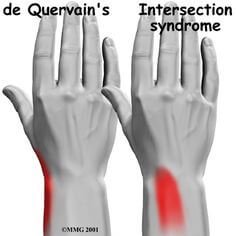Piano and the Risk of Tendonitis
- By: Paul Tobey
As someone who has lived through 3 incredibly painful bouts of tendonitis, both in my left arm and right arm, I thought it important to pass on some information that has helped me deal with this in the past.
It is important to understand that playing the piano can cause serious injuries such as tendonitis and carpel tunnel syndrome. Both these ailments are known as repetitive strain injuries. The constant up and down, side to side movement of the arms and fingers when playing piano for long periods of time is what causes these injuries.
This is common among piano players. In fact, it is so common that there is a special clinic in Hamilton, Ontario called the Musician’s Clinics of Canada that deals with the prevention and rehabilitation of musician injuries. Naturally their patients include other instrumentalists like violin and guitar but, pianist injuries are certainly among the most common.
What can be done when a pianist gets tendonitis or carpel tunnel syndrome? Well, certainly there are conventional methods of dealing with the inflammation and pain. Unfortunately these types of treatments such as; anti-inflammatories, pain medications and physio therapy are designed to treat the symptoms. Therefore, once the pianist goes back to playing the piano without being completely healed the injuries can re-occur and in the end be quite difficult to get rid of.
It is not uncommon for tendonitis to stick around for very long periods of time. In my case, I once had a problem with my right arm that took almost 3 years to get better. The problem is of course that, as a professional I can’t possibly just stop playing the piano. I can take breaks in between concerts but usually I can only take up to a month’s rest at a time.
So, how can these injuries be cured while still continuing to play? It’s important to understand that not every case is the same but, for me, I actually had to re-learn how to play the piano the correct way. I realized, after visiting the musician’s clinic, that I had the completely wrong approach to playing piano. Specifically, I was too close to the keyboard, I had the wrong wrist position, the wrong finger position and I didn’t understand the concept of leverage.
Leverage means to use the entire body to create volume on the piano. I was trying to create volume by forcing the keys down with forearm strength instead of using the entire body. Therefore, my arm muscles and joints suffered from the strain of trying to play too loud. What I eventually realized, with the help of the musician’s clinic doctor was that, I needed to create velocity as opposed to force. Once the key reached the bottom of its natural movement it can go no further. Yet, I was trying to force the note passed its end without even realizing it.
The correct way is to drive the note down with extra velocity using the back, shoulders, biceps, arms, wrists and fingers and then release at the exact moment the key reaches its lowest point. Therefore, it’s the velocity of the hammer hitting the string that creates volume. Knowing when to let up is very important in the fight to prevent injury.
In terms of moving the piano bench back, I had to learn also to sit with better upright posture and to generate leverage using my entire body. It’s easier to do this with the right foot (pedal foot) forward and the left foot back under the bench. Then as you pivot forward and backward on the bench you have more balance and leverage.
Once last point I should mention; exercise is very important. I started weight training several years ago because, I find that the extra muscle helps a great deal in preventing injury. Be careful however, to consult a professional when starting weight training. You must do it the correct way in order for it to be beneficial.
Paul Tobey – About the Author:
Learning piano lessons takes motivation that sometimes can be missing. Paul Tobey’s online piano lessons are perfect for anyone who may be considering learning to play better piano. He a free piano lesson to new members.
Read more: //www.articlesbase.com/education-articles/piano-and-the-risk-of-tendonitis-123703.html#ixzz1NfPd1L00


